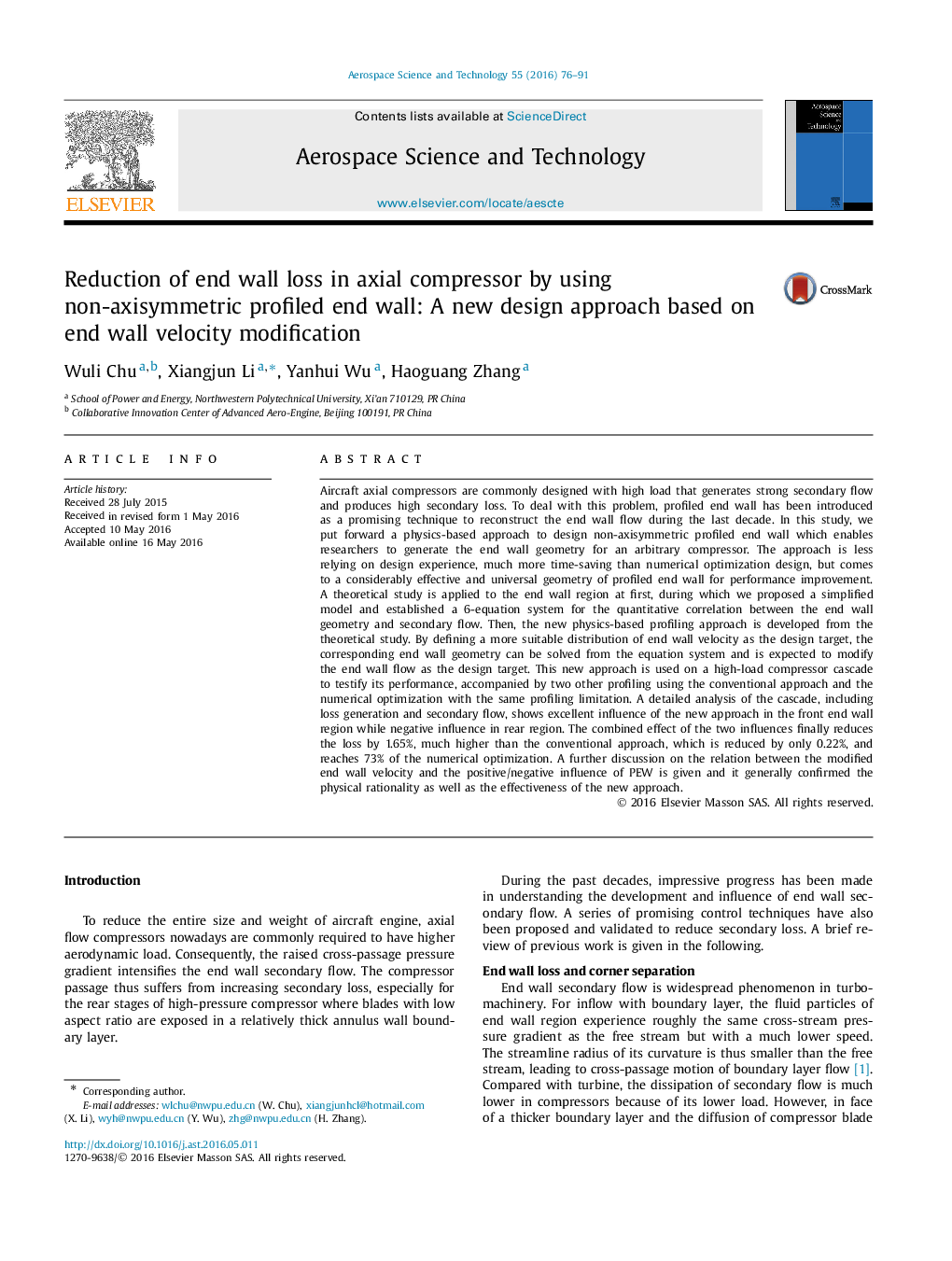| کد مقاله | کد نشریه | سال انتشار | مقاله انگلیسی | نسخه تمام متن |
|---|---|---|---|---|
| 1717543 | 1520079 | 2016 | 16 صفحه PDF | دانلود رایگان |
Aircraft axial compressors are commonly designed with high load that generates strong secondary flow and produces high secondary loss. To deal with this problem, profiled end wall has been introduced as a promising technique to reconstruct the end wall flow during the last decade. In this study, we put forward a physics-based approach to design non-axisymmetric profiled end wall which enables researchers to generate the end wall geometry for an arbitrary compressor. The approach is less relying on design experience, much more time-saving than numerical optimization design, but comes to a considerably effective and universal geometry of profiled end wall for performance improvement. A theoretical study is applied to the end wall region at first, during which we proposed a simplified model and established a 6-equation system for the quantitative correlation between the end wall geometry and secondary flow. Then, the new physics-based profiling approach is developed from the theoretical study. By defining a more suitable distribution of end wall velocity as the design target, the corresponding end wall geometry can be solved from the equation system and is expected to modify the end wall flow as the design target. This new approach is used on a high-load compressor cascade to testify its performance, accompanied by two other profiling using the conventional approach and the numerical optimization with the same profiling limitation. A detailed analysis of the cascade, including loss generation and secondary flow, shows excellent influence of the new approach in the front end wall region while negative influence in rear region. The combined effect of the two influences finally reduces the loss by 1.65%, much higher than the conventional approach, which is reduced by only 0.22%, and reaches 73% of the numerical optimization. A further discussion on the relation between the modified end wall velocity and the positive/negative influence of PEW is given and it generally confirmed the physical rationality as well as the effectiveness of the new approach.
Journal: Aerospace Science and Technology - Volume 55, August 2016, Pages 76–91
